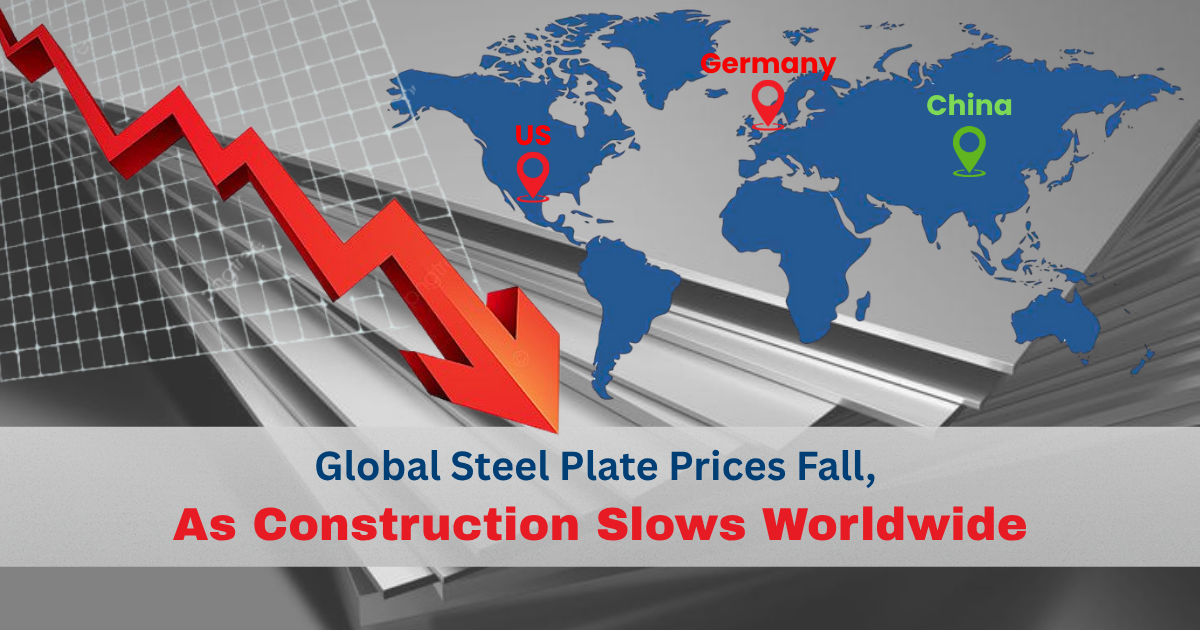India–US Trade Tensions Rise Over Steel and Auto Tariffs NMDC Limited reports a 38% drop in Q4 FY24 consolidated net profit RINL to Raise $23 Million Through Land Sales Amid Crisis

Global steel plate prices continued to decline in July 2025, reflecting persistent weakness in the construction sector and rising inventory levels across key regions.
In Germany, domestic steel plate prices dropped by around 1.4% in the Ruhr region. The fall was driven by a surplus in supply and weak demand from industrial buyers. Mills are facing pressure to cut prices further amid limited new orders.
Similarly, in the United States, prices slipped by 0.4% Ex Works Texas. Lead times have shortened to just over five weeks, with buyers benefiting from increased negotiating leverage. The decline underscores cooling demand in key sectors like construction, energy, and manufacturing, despite continued import restrictions and high federal tariffs.
Meanwhile, China managed to keep prices stable in the face of a 4.1% increase in medium plate inventories. Government policies aimed at supporting domestic steel demand and limiting output have helped shield the market from steeper declines.
The global downturn comes as construction activity slows and infrastructure spending remains delayed or uneven. Excess capacity, particularly in Europe and the U.S., continues to weigh on pricing. Analysts say a rebound in steel plate demand is possible later in 2025, but only if project activity increases and stock levels normalize.
Until then, global steel plate markets are expected to remain soft, with price pressure persisting unless demand fundamentals improve.
Also Read : Iron Ore Prices Rise on Strong Steel Output and Building Demand in China Japan Opens Anti-Dumping Probe into Chinese, Taiwanese Stainless Steel Imports